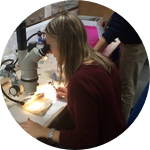Please wait...
About This Project
This interdisciplinary project looks at how the earliest weapons were used. Plain wooden spears have been found in Europe, with the earliest example dating to around 400,000 years. Though found alongside butchered animals it's unclear if they were designed as thrusted or thrown hunting spears or for self-defence against big cats. I will test replicas in a ballistics lab to evaluate effectiveness as hand-thrown hunting spears, helping understand key questions about behaviors in human evolution.
More Lab Notes From This Project

Browse Other Projects on Experiment
Related Projects
Did the Pima Indians design arrow points specifically to penetrate Apache rawhide shields?
The experiment will test arrow points made from six materials of varying fracture-toughness. Different target...
Did our ancestors use wooden spears as hand-thrown hunting weapons?
This interdisciplinary project looks at how the earliest weapons were used. Plain wooden spears have been...


